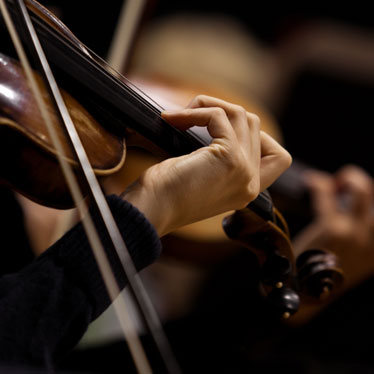10 Tips For Better Finger Dexterity

Have you ever felt your fingers cramping while you’re practicing? Are you a beginner music student who is having a hard time developing left-hand finger dexterity, and maybe feel discouraged about it? Building better flexibility and hand strength is an important part of learning to play any string instrument. And, since you’re relying on muscles that have rarely been used, this aspect of training can be a challenge for many students.
However, you can improve finger dexterity and increase your hand strength by employing some specific techniques. Avoiding injuries, cramping, and pain is really a matter of conditioning your muscles and joints for their new tasks. With the right stretches and hand exercises, you can transform your abilities and protect yourself from experiencing hand fatigue or a debilitating injury.
Stretches
No one would set out hiking or running without doing some hamstring and leg stretches, and the same philosophy holds true for musicians, especially beginners. Stretching your finger muscles and flexing your joints has a big influence on your finger dexterity and your range of motion. These exercises are easy to do before you practice, and can be swiftly done between sets to help maintain your flexibility.
#1. Finger stretches. Extend and spread your fingers out from your palm as far as they’ll go. Hold the stretch for five count, then relax your hands into a loose fist. Perform ten repetitions. You can also vary this exercise by squeezing your fingers into a tight fist after the stretch.
#2. Wrist stretch. While holding your fingers extended, gently rotate your wrists clockwise and counterclockwise, for ten repetitions.
#3. Wrist and forearm stretch. Bring your palms together in front of your body (like praying hands), and slowly extend your elbows further out. With fingers pointing up, gently turn them down as far as you can and hold the stretch for a count of five. Repeat this process five more times.
#4. Shoulder stretches. With arms by your sides, gently roll your shoulders forward three times, then backward three times. You can also bring your right arm across your chest vertically, holding the stretch with your left arm for a count of five. Repeat with the left arm.
Perform these stretches every 10-15 minutes of playing time, especially the finger ones, to help keep the blood flowing to your muscles and joints, and to prevent cramping or sprains.
Finger and Hand Exercises
These tips help improve your reach and extend your dexterity. And, the good news is that many of these hand exercises can be practiced when you don’t have your instrument.
#5. Scales, scales, and arpeggios. You might not realize it, but performing your chromatic scales (or portions of them) over and over is one of the best ways to increase finger dexterity. Choose arpeggios that include hard reaches for the best results. But, take your time. Rather than trying to rush through your scales, perform them deliberately, at an exaggeratedly slow tempo. After you’ve mastered them Grave, you can gradually increase your speed.
#6. Use a portable fingerboard. You can buy a portable fingerboard, or print out one for free that you can use to practice scales and arpeggios when you don’t have your instrument. These type of tools are great for hand exercises that are silent, letting you practice almost anywhere.
#7. Practice apps. There are tons of practice apps for your specific string instrument that you can download and use to increase your finger dexterity. “Fingering Strings” works for violin, viola, cello, and double bass, and provides fun interactive ways to increase hand strength and fingering responses. It’s available at iTunes for $5.99. Or search the play store for an app that has fingering exercises for your specific string instrument.
#8. Pencil reach. This hand exercise really increases pinky strength and dexterity. Using a pencil or regular pen, grip it in your left hand (you can use this exercise on your right hand, too) using your fingertips only. Gradually ‘walk’ your pinky finger away from the others as far as you can and then slowly ‘walk’ it back.
#9. Solidify your form. Many students forget this aspect when they’re concentrating on finger dexterity, but it is extremely important. Understand that the proper back, shoulder, and arm placement will greatly influence your abilities, especially those in your hands.
#10. Be Patient. Remember, learning new techniques can be challenging. It takes time to build muscle memory and you’ll need to recognize that you won’t miraculously be gifted with amazing aptitude over- night. However, the good news is that if you perform your stretches and hand exercises diligently, your determination will most definitely pay off.


